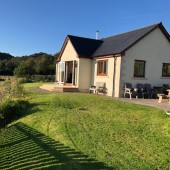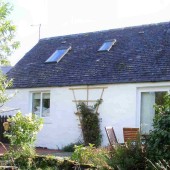Part 1
 In the Third Statistical Account of Scotland it is written that because there is no street lighting, the people of Tayvallich often arrange their meetings according to the phases of the moon.
In the Third Statistical Account of Scotland it is written that because there is no street lighting, the people of Tayvallich often arrange their meetings according to the phases of the moon.
The press made much of this at the time, leaving the public with the impression that we were a strange primeval people, given to pursuing dark rites by moonlight.
Primitive we may be, in the sense that the cheaper values of a modern world have not yet quite taken root here, but, like sensible country folk, we know that bright nights are the best for walking.
Nights, bright or dark, are now mostly peaceful in Tayvallich, though long ago men fought each other often and violently here; and the place has, perhaps happily, little to record that will be found in history books. Its people have seen the ups and downs of Royal Houses, great families, good causes—and bad ones too—from afar, and with few exceptions such things did not come between them and the business of leading their ordinary lives. Alarms and excursions are few, so the history will tell less of wars and politics than of the lives of the people and the kind of country they live in.
Tayvallich—the name means the house or houses on the pass or saddle—lies on the west coast of Argyll, in the Parish of North Knapdale, the village set round a land locked bay, the surrounding country among the most serenely beautiful in Scotland. Lacking the imposing grandeur of the mountains to the north, we have a more domestic and endearing landscape; and perhaps it is because our geological formation is among the oldest in the world that one feels here so strong a sense of the past, so sure a knowledge of continuity through the ages.
The district round Tayvallich contains relics which take us far back into history. The Romans sailed all round the coasts of Scotland and must have seen and noted our shores, but there is nothing to show that they ever landed here. The Norse sailors, however, harried these coasts between 700 and 1000 AD and many of them settled here and have left their mark. Place names in and around Tayvallich are sometimes of Gaelic origin, sometimes a mixture of Gaelic and Norse—one, the farm of Turbiskill, is pure Norse. ‘Kill’ comes from the Nordic word for a well, ‘Turbis’ is probably the name of the man who owned the well. Ulva is also Nordic and means the Wolf Island. Danna is probably a man’s name. North Knapdale is closely connected with the Celtic kingdom of Dalriada, which was the foundation of the Scottish realm.
On Taynish Island, off the shore of the Taynish peninsula, was found some years ago a carved stone which was probably a gravestone, and is dated about 600—700 AD. Another stone was found much longer ago in the garden of Taynish House; and both these may have come from Eilean Mor, on which island there are the remains of an ancient chapel. There is a legend about a cave on this island, that a married couple must not enter it or they will be forever childless. It is not explained why so merciless a retribution should be exacted for an apparently small crime. Another legend tells how a marauding pirate once landed on the island, murdered the hermit who lived there and had charge of the chapel, and stole the church plate. As a punishment he was doomed to sail the seven seas forever, like the Flying Dutchman. Once a year he sails up the Sound of Jura in a galley with black sails, and it is not wise to spend a night on Eilean Mor lest the galley be seen, which would bring disaster on the spectator.
Another chapel at Keills, now a ruin, has fine specimens of Celtic crosses. The designs on some of these are more like Irish that Scots crosses, though one has a Highland harp carved on it. Burials took place here within living memory.
The remains of four ancient forts may be found within this district, their walls clearly distinguishable. They are of great age and their dates are uncertain.
An interesting stone can be seen by the roadside near the fort of Dun Mhuirich. It has a rounded hollow like a small basin, and is known as the christening stone. It is thought that it was used for christening stillborn or illegitimate children, but it may even belong to a pre-Christian era and have been turned to its later use after Christianity came to the country.
Nobody seems to know much about the ship carved on a stone at Croitecombie. The date is about 1876. There are a large pre-Christian bowl and a few small ones. The initials on the stone are A M L, and are probably those of a local family.
At Keills there is a pier, and from there the road runs north to Tayvallich and beyond to Arichonan and Bellanoch, and this is part of one of the old drove roads along which the black cattle, some having landed from Jura, were taken to the Trysts at Falkirk and Stirling. The modern road does not follow the old road all the way—the latter cut across the hills by Barnashalg, where traces of the track may still be seen and where one or two standing stones mark the way. On these standing stones are cup marks, which take them back to the bronze age, and there may, even at that far distant time, have been a track or road there.



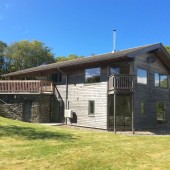
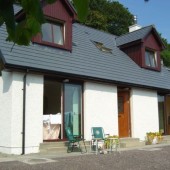
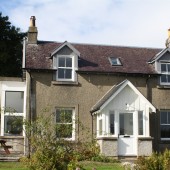
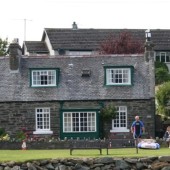

_baef36edc53bdd009ca06069d3b23fda.jpg)
